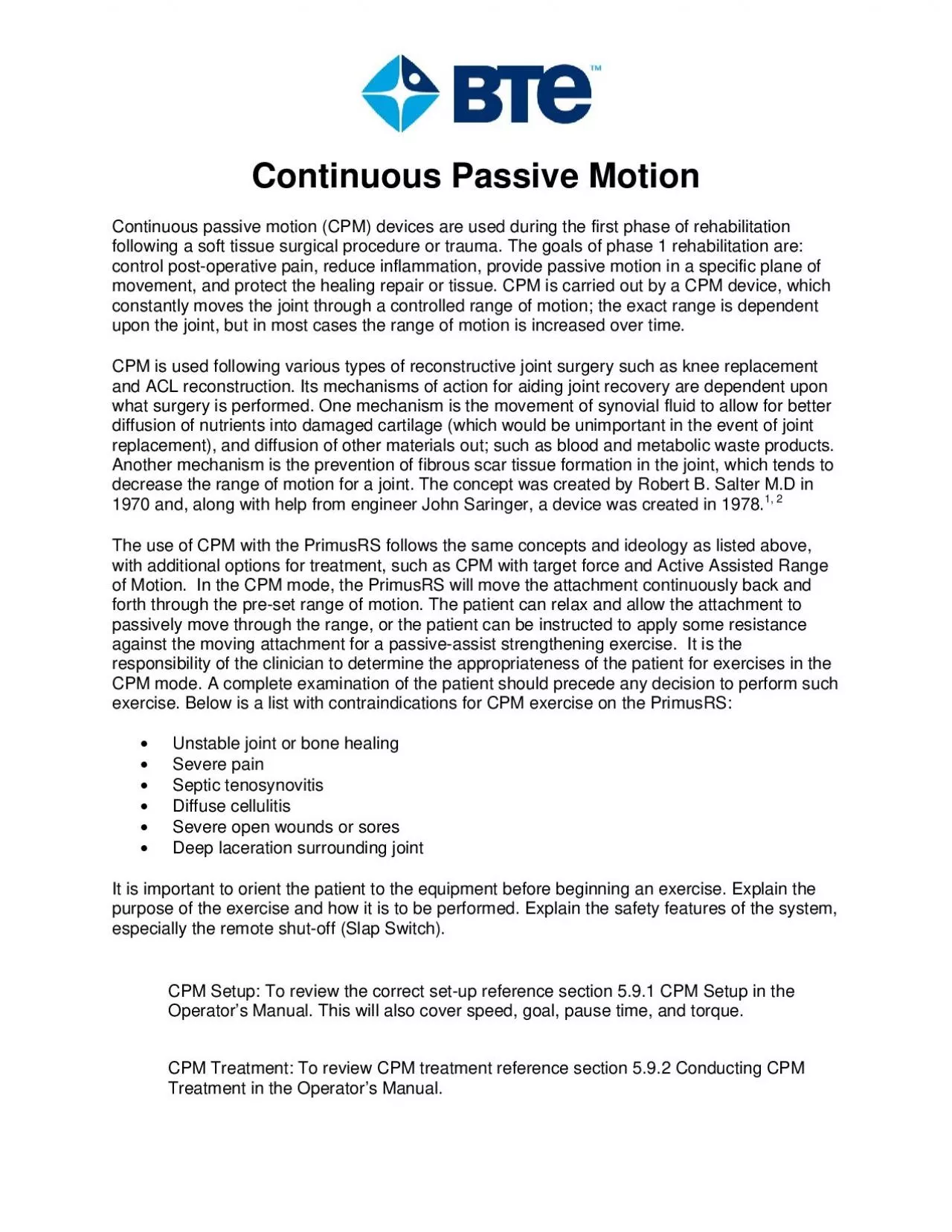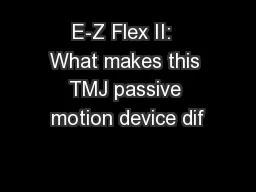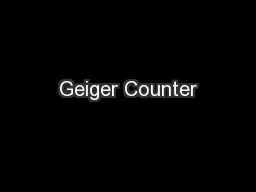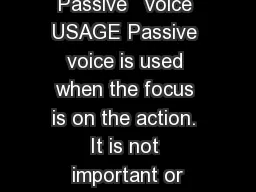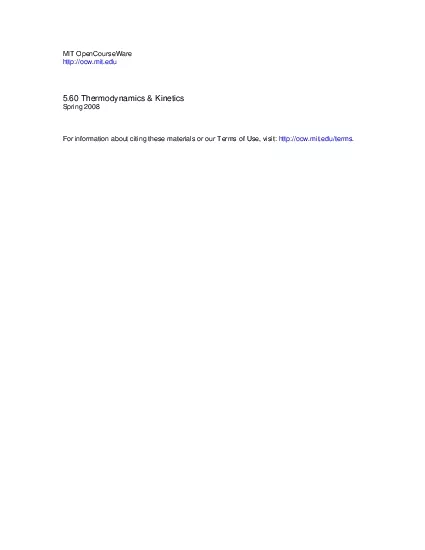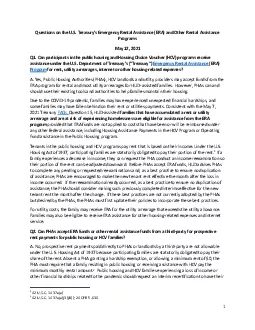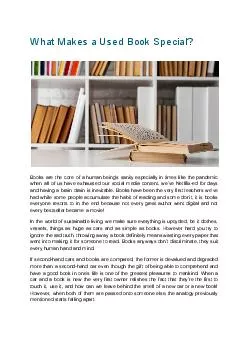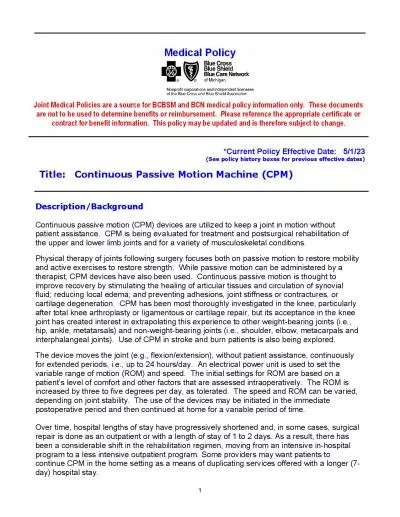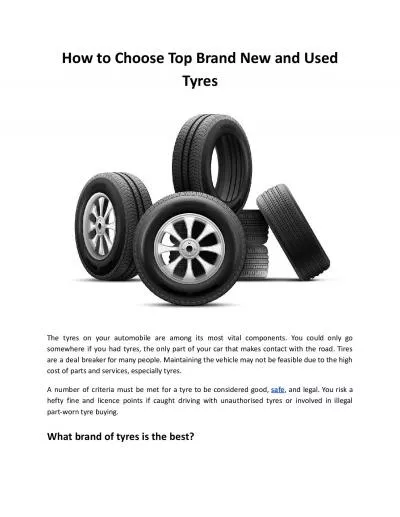PDF-Continuous passive motion CPM devices are used during the first phas
Author : eliza | Published Date : 2022-08-25
CPM is a useful form of treatment for the acute postsurgical patients and anyone who requires improved range of motion Range of motion is paramount following medical
Presentation Embed Code
Download Presentation
Download Presentation The PPT/PDF document "Continuous passive motion CPM devices ar..." is the property of its rightful owner. Permission is granted to download and print the materials on this website for personal, non-commercial use only, and to display it on your personal computer provided you do not modify the materials and that you retain all copyright notices contained in the materials. By downloading content from our website, you accept the terms of this agreement.
Continuous passive motion CPM devices are used during the first phas: Transcript
Download Rules Of Document
"Continuous passive motion CPM devices are used during the first phas"The content belongs to its owner. You may download and print it for personal use, without modification, and keep all copyright notices. By downloading, you agree to these terms.
Related Documents

